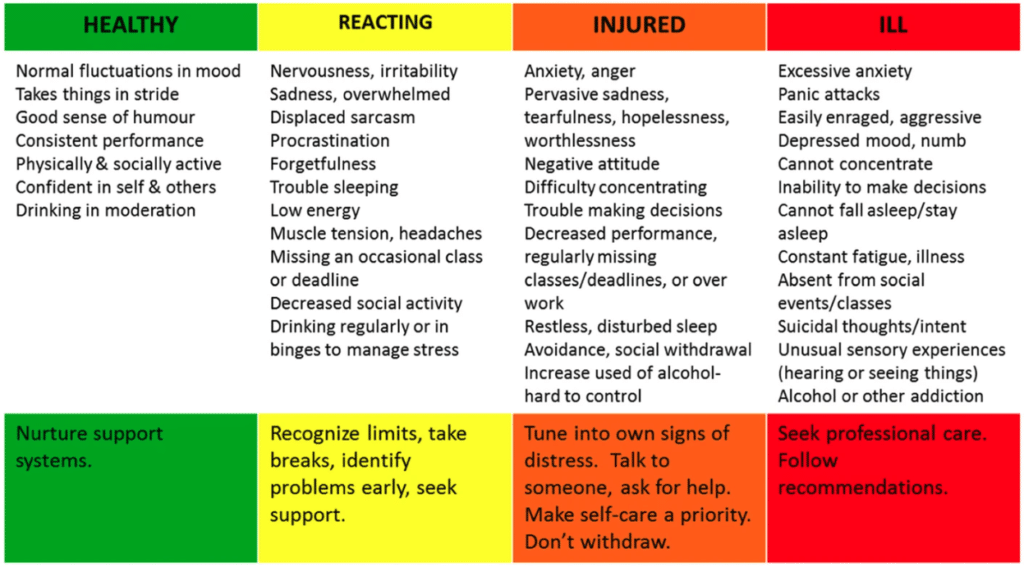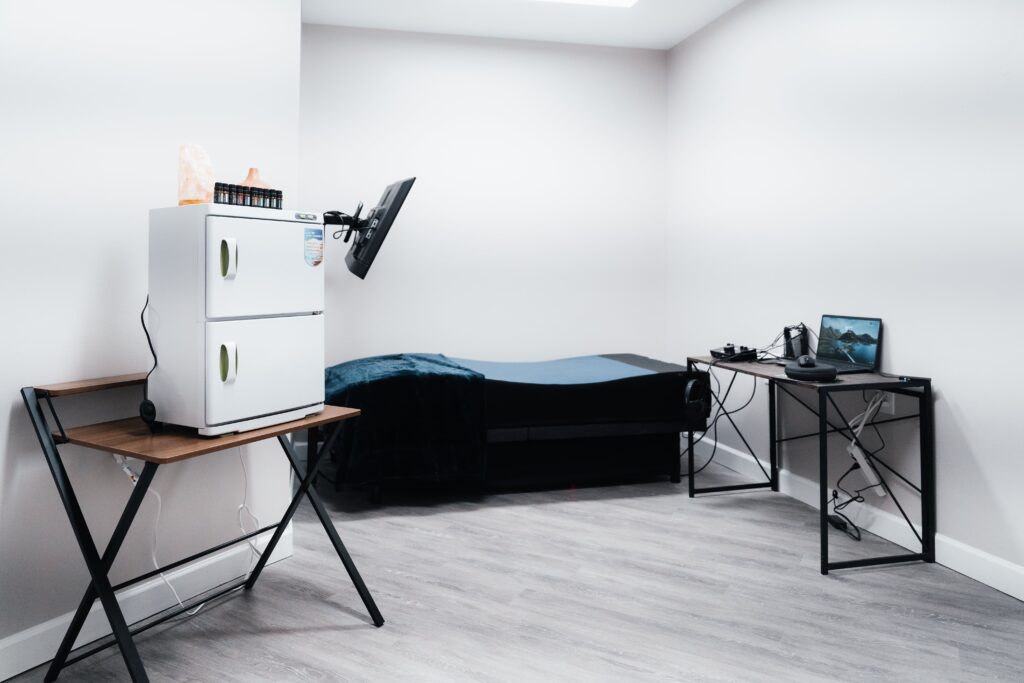The continuum model of mental health is a framework that helps people understand and manage their moods, emotions, thoughts, behaviors, relationships, and life experiences in ways that are healthy for them. This article explains the continuum model and how it can be used to help you better understand your own experience with depression or anxiety. Here’s what you need to know.
Talk to someone about mental health today! Call 629-217-2658
What Is the Continuum Model of Mental Health?
In health care, the continuum of care describes how healthcare providers follow a patient from preventive care through crisis management, stabilization, rehabilitation and maintenance.
The continuum model of mental health is based on the idea that each person has a unique combination of traits and vulnerabilities that make him or her vulnerable to certain types of problems. These include emotional, behavioral, cognitive, interpersonal, and biological factors. The model also recognizes that these factors interact with one another to create different patterns of symptoms and functioning.
In other words, there is no “one size fits all” approach when it comes to treating mental illness. Instead, treatment should focus on helping individuals develop skills to cope more effectively with specific situations and challenges they face.

Why Is the Continuum Model Important?
Research has shown that patients’ health is most vulnerable in the gaps between formal treatment. With a continuum of care, patients can experience seamless transitions and get help with the day-to-day changes in their health journey.
As mentioned earlier, the continuum model of mental illness emphasizes the importance of taking an individualized approach to therapy. That means that instead of trying to treat someone like a textbook case of schizophrenia, bipolar disorder, or major depression, therapists will try to figure out what’s causing their client’s particular problems and how best to address them.
By focusing on the unique ways that every person reacts to stressors, the continuum model encourages clinicians to tailor treatments to the needs of each patient. As a result, they’ll be more likely to achieve positive outcomes.
In addition, the continuum model recognizes that different types of disorders require different treatment approaches. For example, if you’ve been diagnosed with anxiety or depression, you probably already know that medication may not be the only fix to your problem. But if you’re suffering from obsessive compulsive disorder (OCD), medications can often help reduce symptoms and make everyday tasks easier.
There is no one-size-fits-all solution when it comes to treating mental health. To find a treatment option that works best for you, call: 629-217-2658
How Does the Continuum Model Work?
To understand the Continuum Model think of a straight line. On one end resides mental health, the other end resides mental illness. Where a person’s faculties are determined where they are on the line. Shifts happen constantly along this continuum and mental health varies from the crisis, struggling, surviving, thriving, and excelling.
According to this model, everyone has a set of strengths and weaknesses that contribute to overall well-being. For example, some people have a tendency to become easily overwhelmed by stressors and may find themselves experiencing feelings of helplessness or hopelessness. Other people tend to feel confident and capable even under stressful circumstances.
These differences between people aren’t just theoretical concepts. They actually affect our behavior and the way we think and act. In fact, research shows that people who score high on tests measuring personality traits such as extraversion, agreeableness, conscientiousness, emotional stability/neuroticism, and openness to experience are generally happier than those who score low on these measures.
This means that if you’re feeling down, anxious, or depressed, you might want to look for signs of these personality traits in yourself. Then use this information to identify the areas where you need to work on improving your coping skills so that you can get back to being happy and healthy again.
At Arbor Wellness, we know that a patient’s journey did not start here, nor will it stop here. We are dedicated to providing a trauma-informed care setting that teaches patients the skills they need to continue on their health journey when they leave our doors.
Our residential treatment is not the only resource your loved one will be receiving! Arbor Wellness supports our patients long after they leave with alumni services and aftercare.
Who Uses the Continuum Model?
People who use the continuum model of mental health believe that understanding the relationship among various aspects of your personality—such as your temperament, character, and social skills—can help you improve your ability to deal with difficult situations.
For instance, if you’ve been struggling with depression, you might benefit from learning about your personality traits and identifying which ones are most likely contributing to your problem. You could then learn strategies to change the way you behave and respond to challenging situations.
Another advantage of using the continuum model is that it helps us understand why some people seem to be able to handle life’s stresses better than others. This knowledge can help you recognize warning signs of future problems and take steps to prevent them.
Arbor Wellness is a mental health residential treatment center. We can help your loved one move towards health and recovery they need. We offer intensive therapy through both individual and group therapy, illness management education, medication education and management, case management, ancillary services, and coordination of continuing care plans for outpatient care after discharge.
Getting a Mental Health Assessment in Tennessee
Mental health and mental illness may ebb and flow throughout a person’s life. This continuum model provides an opportunity to assess how someone is doing at any given time. A mental health assessment allows professionals to track changes over time and provide appropriate care.
A mental health assessment will include questions about moods, thoughts, behaviors, relationships, and functioning. These factors are all connected. Therefore, it is important to gather information about each area when assessing mental health.
In addition to asking patients about their symptoms, clinicians should also ask about their personal history. The more information they receive, the better equipped they’ll be to develop a treatment plan.
Where Do You Fit In?
The following sections outline steps to help you. But to get started, you’ll first need to determine whether you’re interested in receiving a mental health assessment for you or a loved one. If you decide to go for help, call us and we’ll schedule you in for a thorough mental health assessment. Once we have a clear picture of your mental health we’ll be able to provide solutions to improve your mental health and wellness.
Call Arbor at 629-217-2658
Step 1: Take Care of Yourself
Your first step in participating in your loved one’s continuum of care is to take care of yourself! You may have been forced to act as an impromptu “therapist” for your loved one, and that takes its toll.
While your loved one is in treatment at Arbor Wellness, this is your time to take care of personal needs. This includes doctor’s visits and the ability to reacquaint yourself with old hobbies and other forms of self-care.
Remember, you cannot pour out of an empty cup; to help someone else, you need to make sure you are also caring for yourself!
Step 2: Get Educated
Your second step is education! Learn about your own trauma. Also, seek help from an individual therapist, and try to understand your loved one’s diagnosis. Go to the Arbor Wellness Resources page for YouTube Videos, articles, and books that are good places to start in your personal learning.
By educating yourself, you will not only be more empathetic to the challenges facing your loved one, but you will know more about the proper ways to help them heal! Sometimes, our best intentions can be enabling rather than healing.
Step 3: Find Community
Your third step is to find a community! It is said that we are wounded in isolation but we heal in community. It is important for you to have the support you need to continue to be there for your loved one.
Utilize support from community organizations such as NAMI, Al-Anon, and/or Codependents Anonymous (CoDA). Arbor Wellness staff is here to assist you in this process with referrals and educational resources if needed!
Step 4: Integrate Our Help With Your Love and Support
Finally, you will be an integral part of your loved one’s continuum, but you are not solely responsible for them. You can help your loved one by stepping back and allowing staff to do the job. This allows you to provide support, encouragement, and love while they are actively in treatment at Arbor Wellness. When it is time to re-integrate your loved one back into family dynamics, staff will provide information and guidance about how to do so effectively.
Learn More About the Mental Health Continuum
If you or a loved one are in need of help, contact us today. At Arbor Wellness, we provide the foundation to help individuals take control of their mental health.
When your loved one leaves Arbor, you can help them by continuing to focus on taking care of yourself. Being a role model to your loved one around the willingness to change can make a huge difference.

























